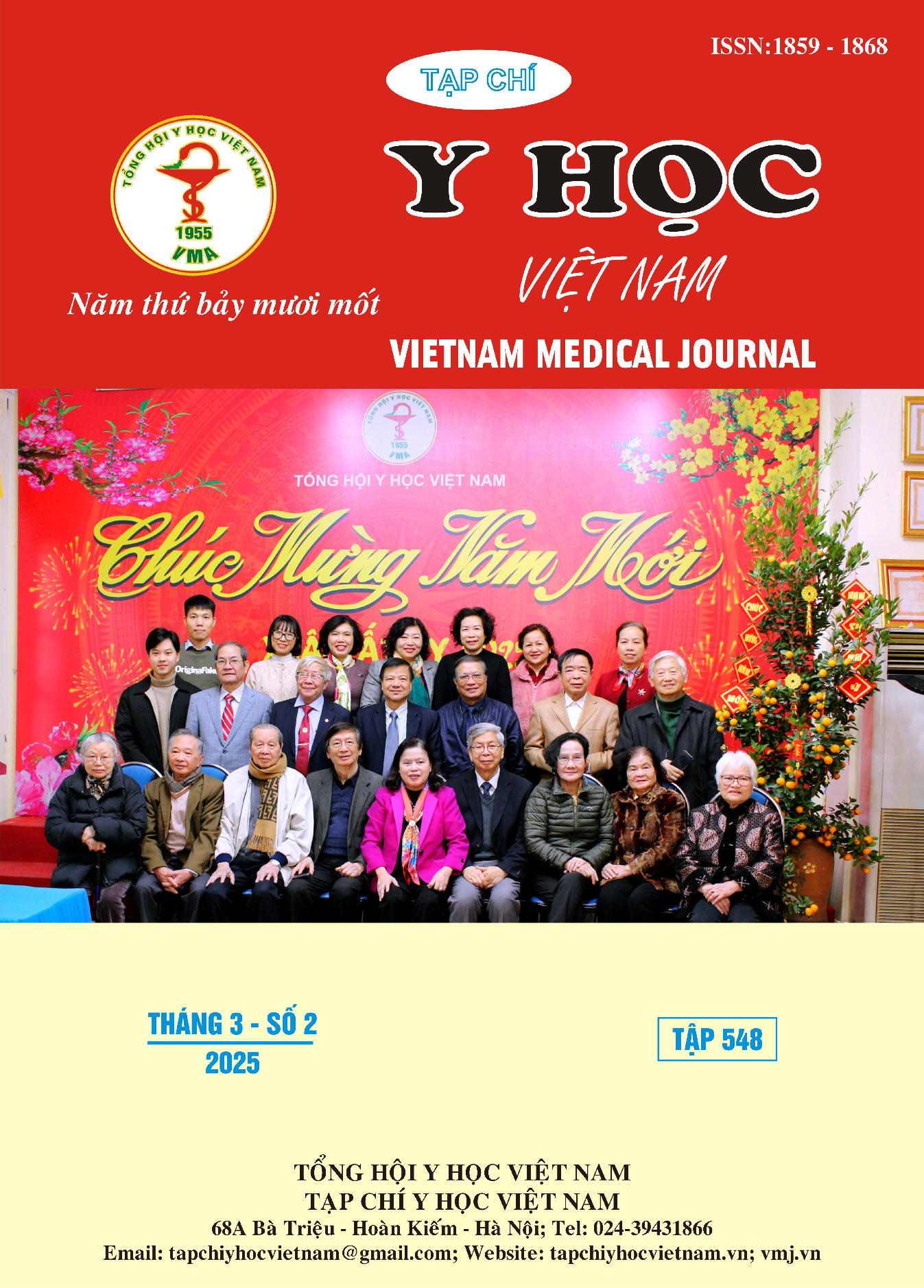MICROBIOLOGY CAUSE URINARY TRACT INFECTION IN CHILDREN 2 MONTHS TO 5 YEARS OLD AT QUANG NINH PROVINCE
Main Article Content
Abstract
Objective: Identify microorganisms causing Urinary Tract Infection in children from 2 months to 5 years old at Quang Ninh Province. Materials and Methods: This is a prospective and cross - sectional study was conducted on 161 children from 2 months to 5 years of age who were diagnosed with urinary tract infection from October 2023 to September 2024 at Quang Ninh Hospital for Obstetrics - Pediatrics and Quang Ninh General Hospital in Quảng Ninh Province. Results: Out of the 161 children 2 months to below 5 years, who presented with urinary tract infection (UTI); 12% children of urinary tract infection had a positive urine culture. The most common isolated pathogen was Escherichia coli, which was found in 50,0% of patients, followed by Enterococcus faecalis in 30% of patients, and P.mirabilin in 10% of patients. The children from 2-> 24 months old, the cause of UTI was E.coli (50.0%), and E.faecalis (41.7%). Children who were 2 to 24 months of age the cause of UTI were E.coli (50.0%), and E.faecalis (41.7%). Children of 24 - 60 months old the cause of UTI were E.coli (50.0%), and P.mirabilin (25.0%). E.coli was maximum sensitive to Amikacin (100%), Meronem (60%), and resistance to most Cefoxitin, Ampicillin/Sulbactam. E.faecalis bacteria were resistant to most Gentamycin, Cefoxitin, but was highly sensitive to Vancomycin (100%), Amoxicillin/Clavulanic Acid (66.7%), Ampicillin (66.7%). Conclusion: Bacteria commonly causing UTI from 2 months to 5 years old were E.coli.
Article Details
Keywords
etiology, microbiology, Urinary Tract Infection, children
References
2. Leung A. K. C., Wong A. H. C., Leung A. A. M., et al. (2019), “Urinary Tract Infection in Children”, Recent Pat Inflamm Allergy Drug Discov, 13 (1), pp. 2-18.
3. Bệnh viện Nhi đồng 1 (2021), "Nhiễm trùng đường tiết niệu trẻ em", Phác đồ điều trị nhi khoa - Bệnh viện Nhi Đồng 1, NXB Y học.
4. Keren R., Shaikh N., Pohl H., et al. (2015), “Risk Factors for Recurrent Urinary Tract Infection and Renal Scarring”, Pediatrics, 136 (1), pp. e13-21.
5. Okarska-Napierała M., Wasilewska A., Kuchar E. (2017), “Urinary tract infection in children: Diagnosis, treatment, imaging - Comparison of current guidelines”, J Pediatr Urol, 13 (6), pp. 567-573.
6. Lương Thị Phượng, Tống Ngọc Huy, Nguyễn Ngọc Huy, et al. (2022), “Kháng kháng sinh ở trẻ nhiễm khuẩn tiết niệu có bất thường đường tiểu tại Bệnh viện Nhi Trung ương”, Tạp Chí Nghiên cứu Y học, 15 (3), tr. 98-105.
7. Bộ Y tế (2015), Hướng dẫn chẩn đoán và điều trị một số bệnh thường gặp ở trẻ em (Ban hành kèm theo Quyết định số 3312/QĐ-BYT ngày 07/8/2015), Bộ Y tế.
8. Lê Quang Phương, Phạm Văn Đếm, Nguyễn Thị Quỳnh Hương (2016), “Thực trạng nhiễm khuẩn đường tiểu trên trẻ từ 2 tháng đến 5 tuổi có sốt tại khoa khám bệnh, Bệnh viện Nhi Trung ương”, Tạp chí Khoa học ĐHQGHN: Khoa học Y Dược, 32 (2), tr. 117-123.
9. Isac R., Basaca D. G., Olariu I. C., et al. (2021), “Antibiotic Resistance Patterns of Uropathogens Causing Urinary Tract Infections in Children with Congenital Anomalies of Kidney and Urinary Tract”, Children (Basel, Switzerland), 8 (7), pp. 585-593.
10. Daniel M., Szymanik-Grzelak H., Sierdziński J., et al. (2023), “Epidemiology and Risk Factors of UTIs in Children-A Single-Center Observation”, Journal of personalized medicine, 13 (1), pp. 138-145.


